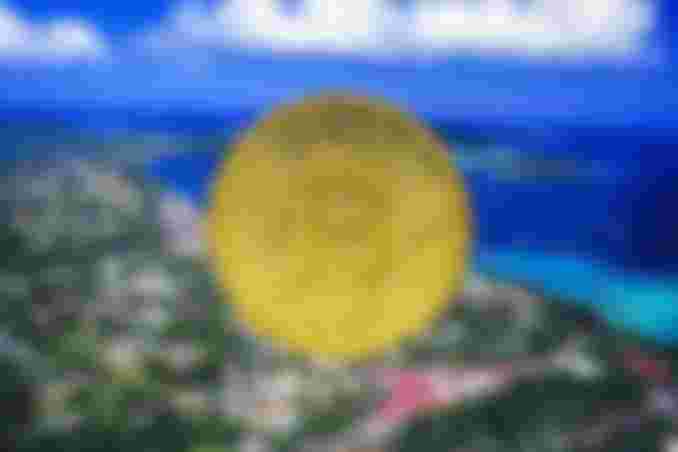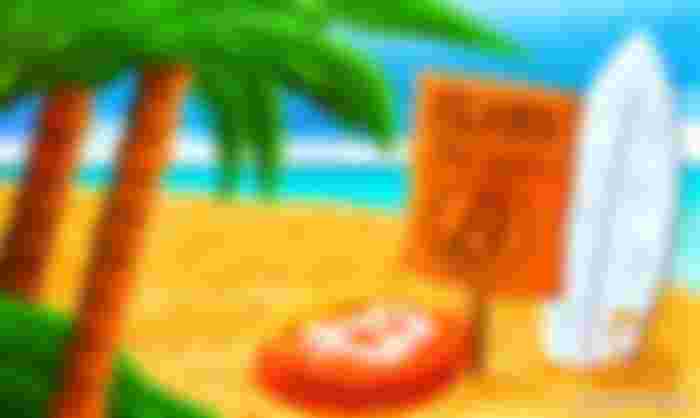The tiny tropical island of Yap lies in the eastern Pacific Ocean, about a
thousand miles to the east of the Philippines. It is about 38 square miles.
Many hundreds of years ago, voyagers, led by a man named Anagumang,
travelled some 300 miles from Yap to its closest neighbour, the island of Panau.
There they found a kind of limestone rock, rather like marble – calcite rock to be
precise – which they had never seen before. It was white, translucent and it
sparkled in the sun. They were transfixed by what they saw. Using stone tools
and shells, they quarried some of the rock and brought it home.
Back on Yap, the shiny rock was a big hit. People wore it as jewellery and
expeditions soon set out to retrieve more of it. Its beauty, its scarcity and the
great risks involved in bringing it home (300 miles by canoe) made it extremely
precious to the Yapese – just as gold and silver were to people elsewhere in the
world.

Deals were struck with the Palau-ans. For the privilege of quarrying their
rock, the Yapese paid them beads, coconut meat (copra), even sea cucumbers.
They also did jobs for them.
As the rest of the world moved from using gold and silver as jewellery to
using it as money, so the Yapese – who had no precious metal – started using this
stone as money. It was cut into disc shapes – like coins, in many ways, although
considerably bigger. Most were about a foot to two feet in diameter, although
they could get as large as five feet across. Holes were cut through the middle of the discs, giving them the look of large doughnuts, so they could be carried on a
bamboo pole. They are now known as Rai stones.
They were transported back to Yap on rafts, towed by canoes with sails.
During the summer months when the winds and currents were favourable,
unmanned rafts were pushed out to sea carrying their valuable stone cargo. Of
course, many of them would not make it back to Yap.

The more gold there is in a coin the more valuable it is. The more of this rock
there was in a Rai stone the more it was worth. When European travellers
arrived in the 19th century with larger ships and iron tools, the stones got even
bigger. The largest that made it across the water is found on a small island to the
north of Yap, called Rumung. It is almost ten feet across and a foot in width.
Weighing several tonnes, it would take over 100 men to lift (it takes about 40
men to lift one tonne).
The Rai stones were the biggest, heaviest, least portable currency in all
human history.
The largest stone has been found where it was abandoned back on Palau. It
weighs some seven-and-a-half tonnes and is almost 12 feet across. It is also
broken. And therein lies one of the problems with this stone cash. Not only were
many of the rocks too big to be constantly moved about as you might move
around gold, silver or any other form of money, they could also break easily. So
the larger stones were simply left in prominent positions in villages and outside
people’s homes as displays of wealth.
Rather than move the stone each time a transaction took place, the stone was
left where it was and ownership of the stone was transferred. The ownership was
recorded orally and retained in locals’ memory.
Picture an enormous Rai stone sitting prominently in a village. Everyone in
the village knows the stone and who it belongs to. Of course this stone wouldn’t
be used for everyday transactions, but perhaps the owner gives it to someone
else as part of a dowry, or a political deal. Perhaps it is inherited. The stone
doesn’t move. But the villagers will all now know the stone belongs to someone
else.
Many of the stones that were quarried in Palau never actually made it all the
way to Yap, particularly when travelling by unmanned raft. Many would sink.
There is even one story of a crew making it to within a mile of Yap before a
storm sunk both the canoes and the rock-laden rafts they were carrying. On one
of the rafts was a particularly large stone, which was now lying at the bottom of
the sea, miles off the coast. Even this stone, and other sunken stones besides,
would be traded, with ownership of the stone recorded orally in the same way as ownership of the stones that were visible in the villages. You know that stone
that sunk three years ago and is lying on the ocean floor? That’s Gary’s.
There are all sorts of parallels between this primitive system of Yap and the
idea at the core of Bitcoin.
Bitcoins stay on the internet, just as Rai stones stay where they stand. But
with each transaction that takes place, ownership of those bitcoins changes. That
ownership is recorded on a ledger – a huge database that is shared across the
Bitcoin network just as ownership of a Rai stone was shared across the local
memory. The database is transparent and there for all to see. Every bitcoin
transaction that takes place for even the smallest amount – every detail is
recorded on it. The database provides the mathematical evidence – the so-called
‘crypto-proof’ – on which Bitcoin is based.
It is called the ‘block chain’.
Follow me on Noise.cash

